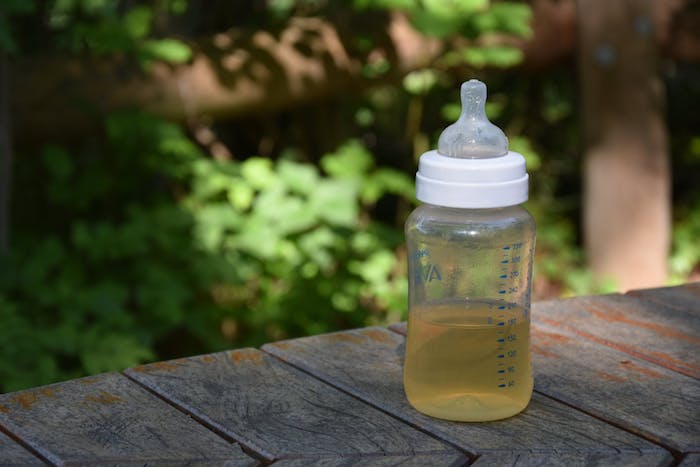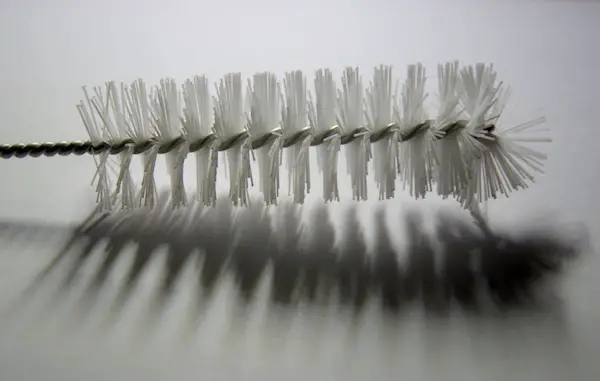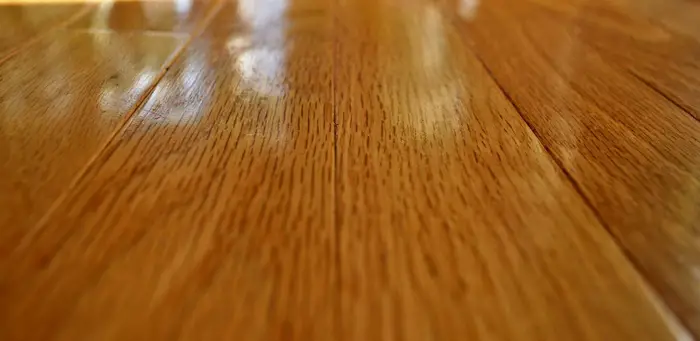Cleaning dishes and bottles go beyond just getting them clean. Think about the tools that you use for cleaning and scrubbing such as the sponge, cloth, and bottle brush. These items need to be cleaned regularly and occasionally replaced with new ones.
Talking of bottle brushes, how often should you get a new one? Ideally, there is no dictated time as to when to replace your bottlebrush. It all depends on the type of brush, and the frequency of using it. Bottle brushes are used mostly to clean baby bottle. Now that means if you have an infant, you are going to be using it often, thus you could give it may be a month or two before replacing it.
Read on for an insight into how to clean the tools for cleaning dishes and bottles, and learn how to clean infant feeding items and when to replace them.
Cleaning a Bottle Brush
Though bottle brushes can be used to clean many things, they are mostly associated with the cleaning of baby bottles. The last thing you want is using a contaminated brush to clean your baby’s feeding bottle. You will be putting your baby in the danger of contracting bacteria. Thus, it is essential to clean that brush properly if you intend to use it again. Here is a guide on how to go about it.
Step 1
Fill a basin or sink with hot boiling water. Then add a tablespoon of liquid detergent in it and put the brush in.
Step 2
Leave the brush in the hot soapy water for about 15 minutes. This is to let loose of the debris stuck on the brush.
Step 3
Comb through the brush gently with a clean plastic comb. This will help get rid of any trapped particles of food and dirt from the bristles.
Step 4
In another basin, put some clean hot or warm water and rinse the brush in it. Transfer the brush onto a clean plate or bowl and sprinkle some hydrogen peroxide over it, ensuring the peroxide touches on all the brush bristles.
Step 5
Allow the peroxide to stay on the bristle for 15 minutes to sanitize it. You can now rinse your brush in running water and let it dry in the air.
With the above simple steps, your bottle brush will be clean, and it will serve you for some time before you can replace it.
Cleaning Other Dish Scrubbing Tools
Apart from cleaning your bottle brushes, you also need to take into consideration other dish scrubbing tools. Failing to clean and replace these tools will encourage the spreading of bacteria. This, of course, compromises your health and that of your family. Below is a quick guide on how often you should clean or replace your dish cleaning tools.
- The Sponge

If you use the sponge to wash your dishes, then it is mandatory to keep it clean and replace it regularly to avoid bacteria buildup. The frequency with which to replace the sponge will depend on how often you use it. Ideally, you replace your sponges after 30 uses. This means that you should replace it monthly if you use it once every day.
In between the replacement periods, you have to keep the sponge clean always. One way to do it is washing inside the dishwasher with other dishes any time you run a cycle. You can also wash it manually by hand in hot water, and then bleach it to get rid of any residual bacteria.
- Cloth
Just like the sponge, a dishcloth like this should also be replaced after 30 uses, which sums up to once a month if you use it once daily. Although sponges are more susceptible to bacteria, dishcloths could just be as worse. Both share the same warm and moist environments that foster bacterial growth.
A dishcloth is relatively easier to clean compared to a dishcloth. You can simply wash it in the washing machine along with other clothes. For the best results, use hot water and a little bleach. Hanging the dishcloth in the sun or running it in the dryer is a good way to eliminate bacteria.
- Brush
Compared to the above-mentioned tools, the brush happens to the most hygienic choice for cleaning dishes as well as bottles. In any case, they are easier to clean and they even dry faster. To clean it well, use the guideline already given. As for the replacement, it depends on how often you use it. The bottom-line is always keeping it clean to avoid contaminating your baby’s feeding bottle.
How Do You Clean And Sanitize Infant Feeding Items?
As seen already, bottle brushes come in handy when cleaning baby bottles. Apart from caring for the bottle brush, you also need to handle other infant feeding items properly. These items would include rings, bottles, nipples, caps, medicine cups, spoons, and even syringes. Below is a guide on cleaning and sanitizing these items.
Cleaning In the Dishwasher
- The first step is to take apart everything. Separate the bottle parts including nipples, rings, valves, and bottles.
- Rinse all these part in running water whether warm or cold.
- Proceed to place them in the dishwasher. Remember to place the smaller items in the mesh laundry bag or closed-top basket so that they do not get into the dishwasher filter. If possible, it is recommendable to run the dishwasher with hot water and use a heated drying cycle to kill more germs.
- You can then remove the items from the dishwasher but first wash your hands thoroughly with soap and water. If the items are not properly dried, place them on a clean dish towel and let them air-dry and proceed to store them in a clean area. Note that you should not wipe them with the towel as this can transfer germs.
Cleaning By Hand
You can also clean your infant feeding items by hand following the steps below.
- First, wash your hands thoroughly with soap and water.
- Just as in the dishwasher process, separate all items and rinse them under cold or warm running water.
- Place these items in a clean basin filled with hot water and soap. Note that we do not use the sink as it may have germs. Go ahead to scrub these items using a clean brush.
- Rinse the items again under running water in a separate basin.
- Place them on a clean unused dish towel and let these items to air-dry. Again, do not wipe them with the towel as this may transfer germs and bacteria.
- Clean the bottle brush and the wash basin and let them air-dry too.
Sanitizing
If you used hot water in your dishwasher and a heat drying cycle, you may not need further sanitizing. However, if you wash by hand, you will need to have these items sanitized at least once every day using any of the methods below.
- Boiling
Put the disassembled items in a pot full of water. Put it over a source of heat and let it boil for about five minutes. You can then remove each item with clean tongs and place them on a clean dish towel to air dry.
- Steam
Put all the disassembled items in a plug-in-system or microwave and follow the instructions for sanitizing as per the manufacturer.
- Bleach
This should be a last resort if you cannot steam, boil, or use a dishwasher.
- Prepare a bleach solution using 2 teaspoons of unscented bleach in 16 cups of water.
- Immerse all your items in the water and ensure the bottles do not produce any bubbles. Let the solution pass through the nipple holes. The items should soak for at least two minutes.
- Remove the items using clean tongs or hands. Do not rinse to avoid getting back germs. Just like the other methods, place the items in a clean dish towel for air drying.
Let the bottle brushes, wash basins, and feeding items air-dry thoroughly before storage to prevent them from growing mold. Reassemble the feeding items and store them in a clean place free of dust.
Nipples and Bottle-When Should You Replace Them

As you replace the bottlebrush, think also about the associated items. These would include such things as the baby bottles and nipples. Since we are all about hygiene for some of the ignored items, learn when the right is to replace the bottles and nipples.
Nipples
You should regularly check the bottle nipples for the following signs of wear so that you can replace them.
- Liquid inside should drip steadily. If it pours in a stream, or if it comes out rushing, then you should definitely replace it because the hole may have expanded over time.
- If it starts showing some discoloration, it is time to buy a new one.
- If it starts thinning, then it shows that it is weakening due to long use.
- Stickiness and swelling is another sign of the nipple deteriorating and need for replacement.
Bottle
- Immediately you notice any chips, cracks or breaks on your baby’s feeding bottle, replace it immediately. You do not want your baby injuring his mouth by cutting, especially if it is a glass bottle.
- If the bottle has disposable liners, throw the liner after use.
Related questions
How often should you replace your toilet brush?
Due to the dirty work that toilet brushes do, it is recommendable to replace them regularly. However, you should use one as long as you can to maximize its use and reduce wastage. Experts recommend a change every six months; though you can still do it more or less than this depending on how often you use it.
Related Article: How Do You Clean Toilet Brush After Use?
What is the importance of cleaning brushes?
A brush is obviously used to clean something else, thus it is only normal for it to harbor bacteria and dirt after repeated use. If you do not clean it, then it will spread germs to the items you are cleaning and i0t it will not do a thorough cleaning job.
Can you wash the bottles using a dishcloth?
Ideally, bottles are made in such a way that you cannot access inside using your hand. This means that you need a strategy to help you clean the inner part, and that is where bottle brushes come in. While you may squeeze a dishcloth inside and shake it vigorously to take out as much dirt as you can, you will not access every corner of the bottle. Thus, it is recommendable to use a bottle brush instead.


